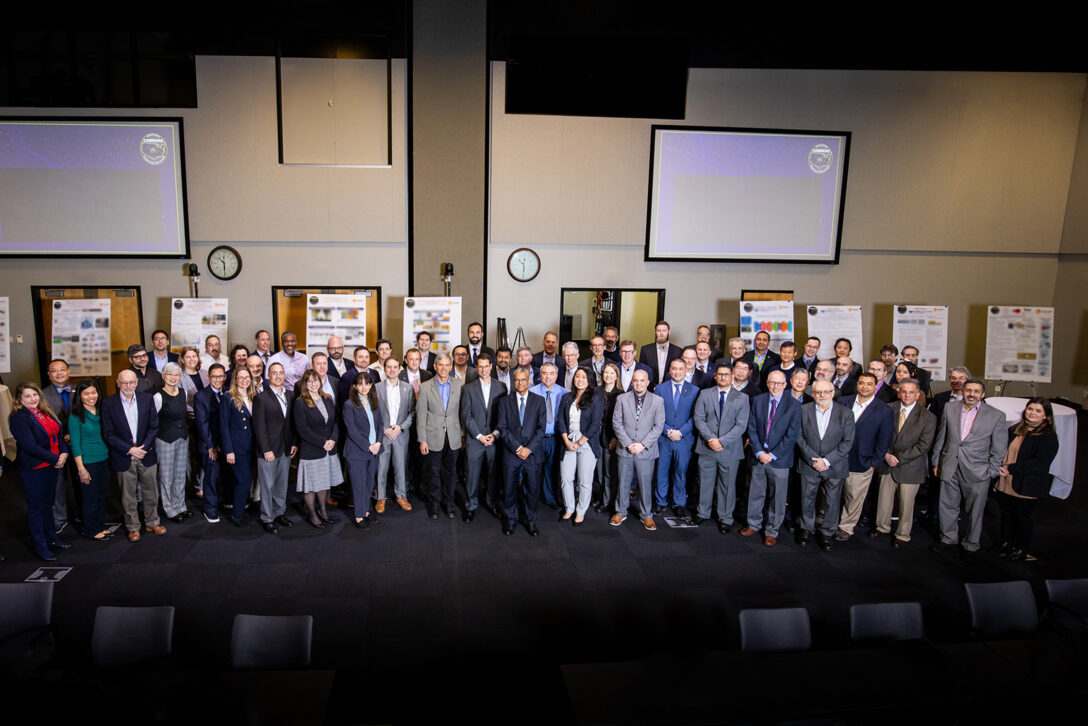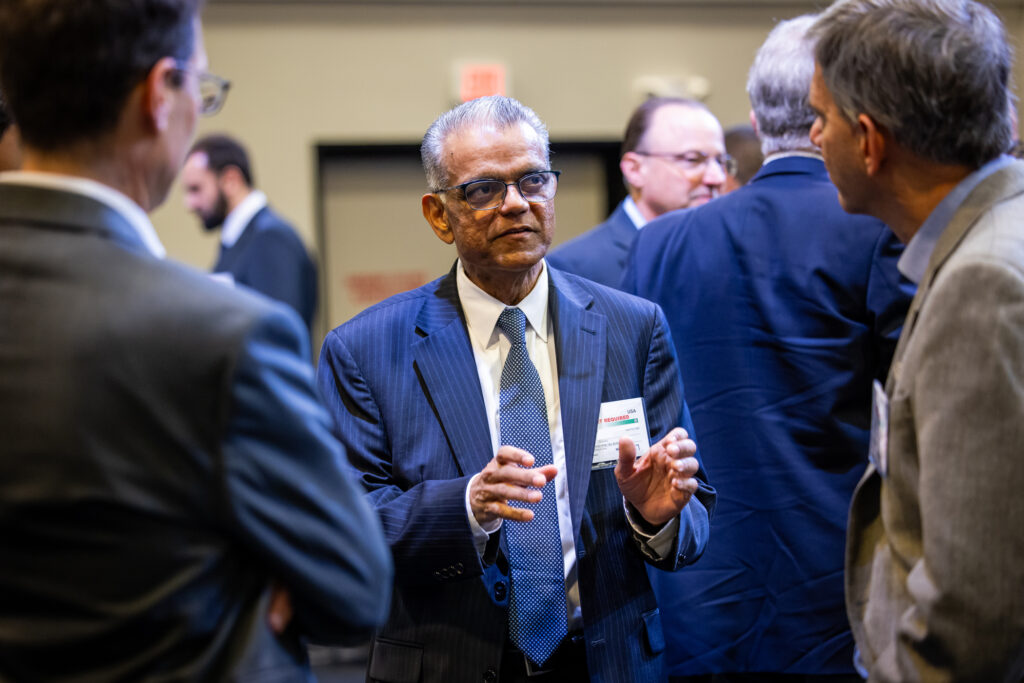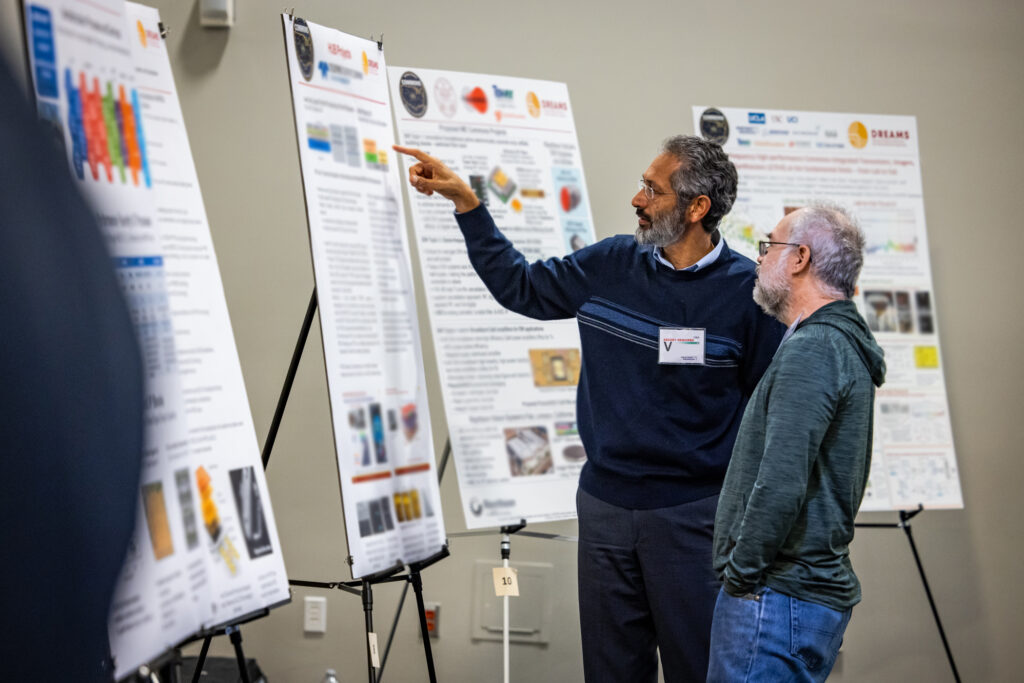Inaugural Site Visit sets stage for DREAMS big Year One
More than 75 people (in-person and virtually) gathered for the Inaugural Site Visit of the California DREAMS (Defense Ready Electronics and Microdevices Superhub) on Jan. 22 at Northrop Grumman’s Space Park campus in Redondo Beach, CA. Academic researchers, industry leaders and government officials met to present their vision, exchange ideas, tour facilities and prepare for a busy first year of the initiative.

More than 75 people (in-person and virtually) gathered for the Inaugural Site Visit of the California DREAMS (Defense Ready Electronics and Microdevices Superhub) on Jan. 22 at Northrop Grumman’s Space Park campus in Redondo Beach, CA. Academic researchers, industry leaders and government officials met to present their vision, exchange ideas, tour facilities and prepare for a busy first year of the initiative.
“We are here this morning because we face a generational challenge,” said Dr. Dev Shenoy, principal director for microelectronics in the Office of the Under Secretary of Defense for Research and Engineering within the U.S. Department of Defense. While the U.S. was once considered a global juggernaut in the microelectronics field during the 1970s, he said, it has since seen its position slowly diminish. The job of California DREAMS is to help jumpstart a turnaround and reinvigorate America’s place in the industry. “I’m grateful to be representing a host of partners dedicated to this mission.”

Dev Shenoy visits with attendees of the California DREAMS Inaugural Site Visit. (photo credit: Northrop Grumman)
A force multiplier
DREAMS was awarded in September 2023 and is led by the University of Southern California. It is one of eight regional hubs in the Microelectronics Commons network, all funded by the CHIPS and Sciences Act of 2022. Its specific focus is on furthering 5G/6G and electromagnetic warfare (EW) capabilities, the future of microelectronics development in the U.S. and the workforce development required to achieve those goals.
“We have so much good work going on in our hub already,” DREAMS Director and USC Information Sciences Institute Associate Director Steve Crago said. Collaboration across a host of institutions can be a force multiplier. “We have 16 funded members in our base hub, anchored by seven nanofabs and three DoD (Department of Defense)-volume fabs. We have about $27 million in Year One to implement our hub model to be ready to support projects. In addition to our base hub members, we have 43 affiliates and 11 core facilities that have committed to working with us on project proposals. We have many more prospective partners and look forward to working with all of them, whether it be on projects funded by the Microelectronics Commons or from other internal or external funding sources.”
“It’s a great time to be participating in this wonderful initiative. We are building on decades of collaboration with the major research universities in Southern California and the major defense primes,” said Gaurav Sukhatme, USC Fletcher Jones Foundation Endowed Chair in Computer Science and Professor of Computer Science and Electrical and Computer Engineering.
The DREAMS partner institutions within higher education are Caltech; Morgan State University in Baltimore; North Carolina A&T State University; University of California, Irvine; UCLA; University of California, Riverside; University of California, San Diego; and University of California, Santa Barbara. Among the many companies involved are The Boeing Co., HRL Laboratories, Lockheed Martin, Northrop Grumman, PDF Solutions, Raytheon/RTX and Teledyne Scientific Co.

Teledyne’s Bobby Brar chats with USC’s Peter Beerel during a poster session. (photo credit: Northrop Grumman)
Saving time through collaboration
The possibilities are there for major breakthroughs, added Gefferie Yee-Madera, vice president of engineering for Northrop Grumman Strategic Space Systems, which hosted the site visit. “As we embark on this journey together, we are reminded of the immense potential that lies within the realm of microelectronics. From enhancing national security to revolutionizing healthcare, from enabling space exploration to powering sustainable energy solutions, the impact of microelectronics knows no bounds.”
While details on specific projects are still in the early phases, the matching of academic thinkers with industry leaders — at the genesis of an idea — is already paying dividends. Faster research and fabrication breakthroughs that were a result of direct hub interactions were presented at the event as “pipe cleaner” projects. For example, a chance meeting on an elevator between a USC professor and a Northrop Grumman fellow led to a pipe cleaner project that saw completion in two weeks — rather than the estimated one-year something similar would normally take.
DREAMS is already proving to be a game-changer in Southern California. For example, a Northrop Grumman general manager was facing a potential supply chain issue on a material that could disrupt the production of a microchip. He wanted a backup but didn’t know of any research that had emerged for a viable alternative material. With DREAMS, he now had a veritable “group chat” to query his obstacles. He was elated when a researcher at the University of California, San Diego quickly responded with a potential solution.

Aaron Oki gives a tour of the Northrop Grumman Microelectronics Center. (photo credit: Northrop Grumman)
Building the foundation for the future
The day’s full agenda included a DREAMS overview, the DoD’s perspective, a panel and speakers outlining industry capabilities and the pipe cleaners/projects. The universities and industry members were encouraged to bring individual posters to show off research and fabrication capabilities, and to spark conversation and collaboration during downtime. Representatives from the government took a tour of the Northrop Grumman Microelectronics Center. “This new organization consolidates the various foundry capabilities across the enterprise to force multiply, which signifies our corporate commitment to the future of microelectronics,” Yee-Madera said.
At the end of the day, representatives from the federal government and the hub partners clarified next steps and potential questions as hub partners prepare project proposals. Those proposals are due in February and will lead to multimillion-dollar awards this summer — work that will hopefully begin the long-term viability of the hub for years to come.
“What you build today will become the foundation of all we build for the future,” Shenoy said.

